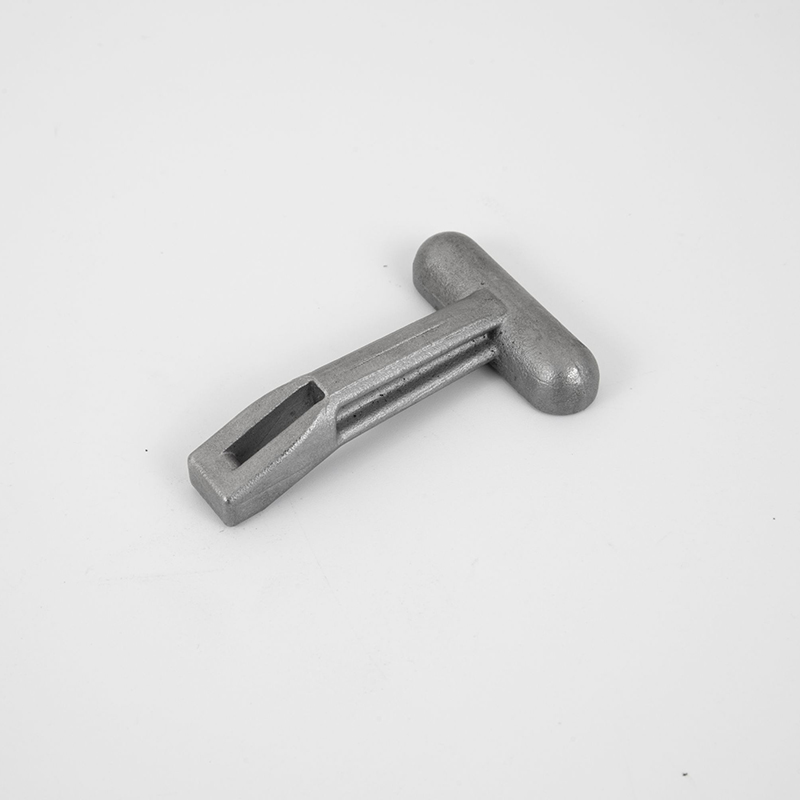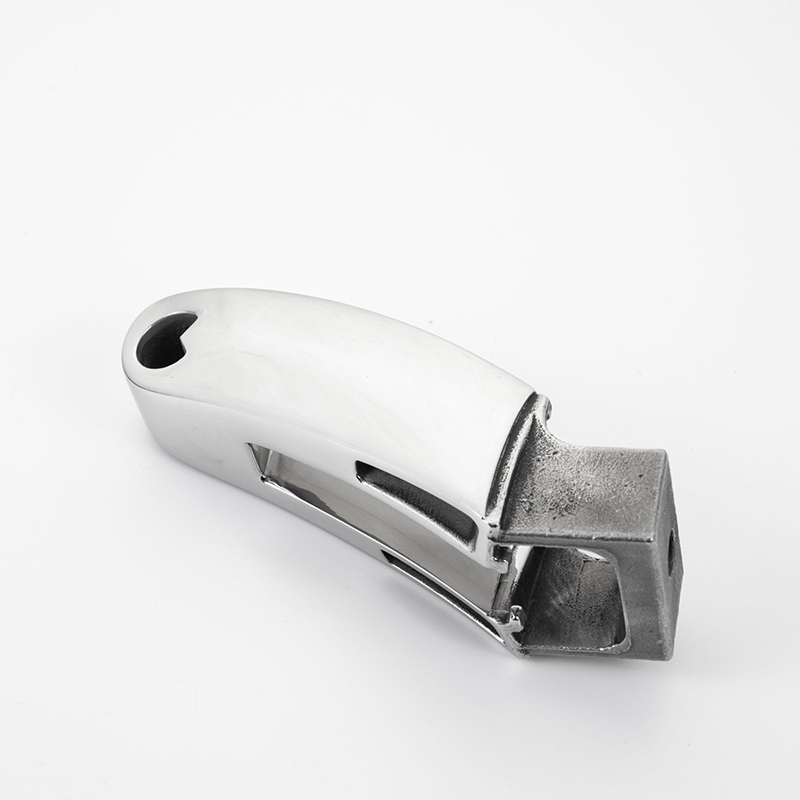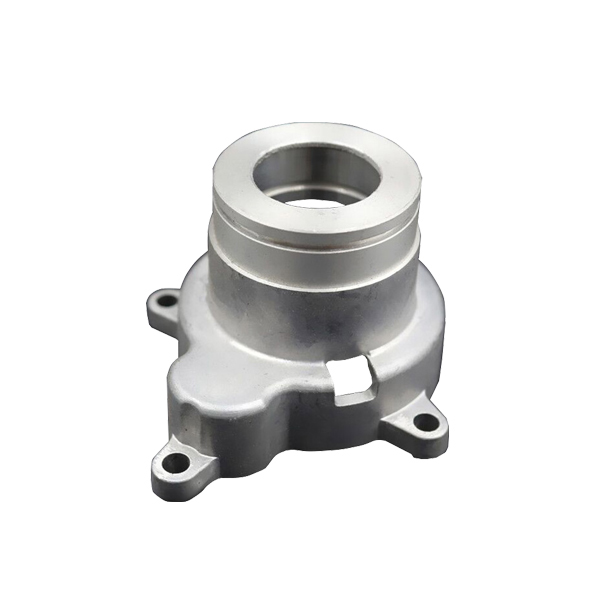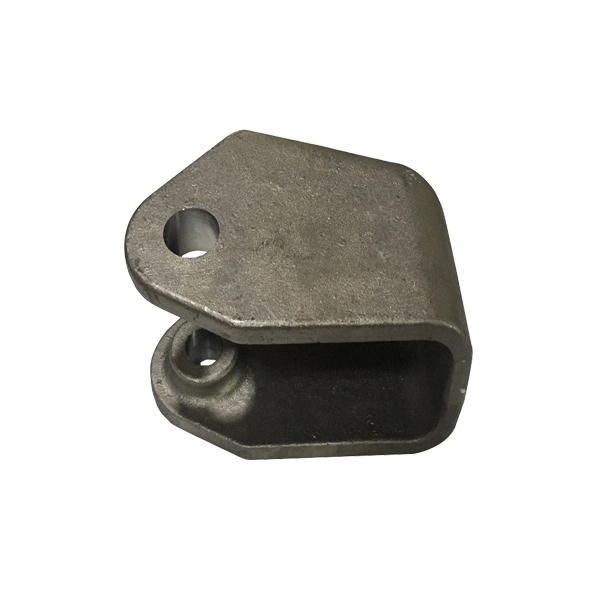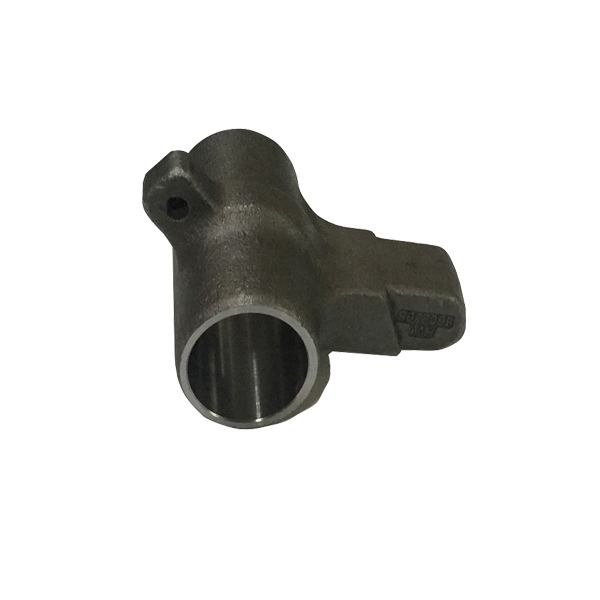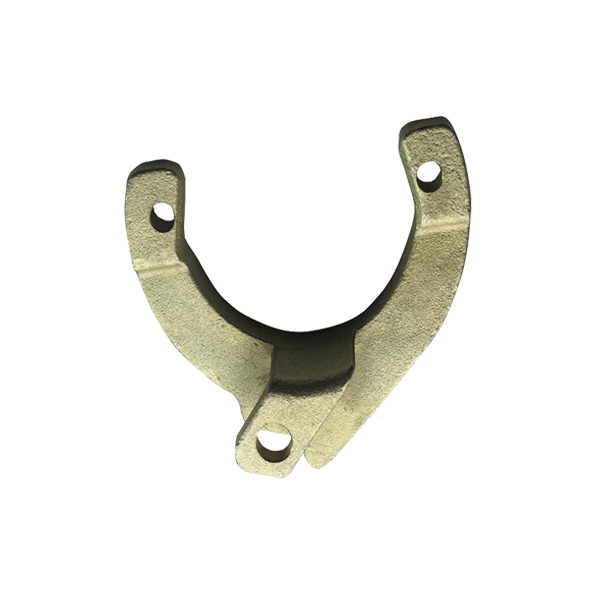Products
Lost Foam Casting
What is the lost foam casting ?
The following is the introduction of high quality lost foam casting, hoping to help you better understand lost foam casting. Welcome new and old customers to continue to cooperate with us to create a better future!
Lost foam casting, also known as evaporative pattern casting, is a modern casting process that involves creating a foam pattern of the desired part, coating it with a refractory material, and then pouring molten metal into the mold to create the final casting. The foam pattern is “lost” during the process as it evaporates when the molten metal is poured into the mold, hence the name “lost foam casting.”
Lost foam casting offers several advantages, including the ability to produce complex shapes with intricate details, reduced machining requirements, and the potential for cost savings due to the elimination of tooling and cores. However, it also requires careful attention to the foam pattern production, coating process, and metal pouring to ensure successful castings.
This process is commonly used in the automotive, aerospace, and general engineering industries for producing a wide range of components, including engine blocks, cylinder heads, pump housings, and other intricate parts.

Steps of lost foam casting
The lost foam casting process involves several key steps, from pattern creation to the final casting. Here are the typical steps involved in the lost foam casting process:
Pattern Creation: A foam pattern of the desired part is created using expanded polystyrene (EPS) foam. The foam pattern is typically produced using a mold or CNC machining to achieve the desired shape and dimensions.
Pattern Assembly: The foam pattern is attached to a sprue to create a complete assembly. This assembly may also include gating and riser systems to facilitate the flow of molten metal and the removal of gases during casting.
Coating: The assembled foam pattern is coated with a refractory material to create a shell around the foam pattern. This shell serves as the mold for the casting. The refractory coating is applied through various methods such as dipping, spraying, or brushing to achieve the desired thickness and strength.
Cluster Assembly: Multiple coated foam patterns are assembled together to form a cluster, which is then placed in a flask. The flask contains sand or other support material to provide structural support during the casting process.
Evaporation: The assembled foam pattern and shell mold cluster are placed in a flask, and molten metal is poured into the mold. The heat from the molten metal causes the foam pattern to vaporize and escape through the refractory shell, leaving behind a cavity in the shape of the original pattern.
Solidification: The molten metal fills the cavity left by the evaporated foam pattern and solidifies within the refractory shell to form the final casting.
Shakeout: Once the metal has solidified, the refractory shell is broken away, and the metal casting is removed. Any remaining foam residue is removed through a shakeout process, leaving the final metal casting.
Finishing: The casting may undergo additional finishing processes such as grinding, machining, and surface treatment to achieve the required dimensional accuracy and surface finish.
These steps are essential to the lost foam casting process, which is known for its ability to produce complex shapes with intricate details and minimal need for secondary operations. However, successful implementation of lost foam casting requires careful attention to pattern production, coating, and metal pouring to ensure high-quality castings.
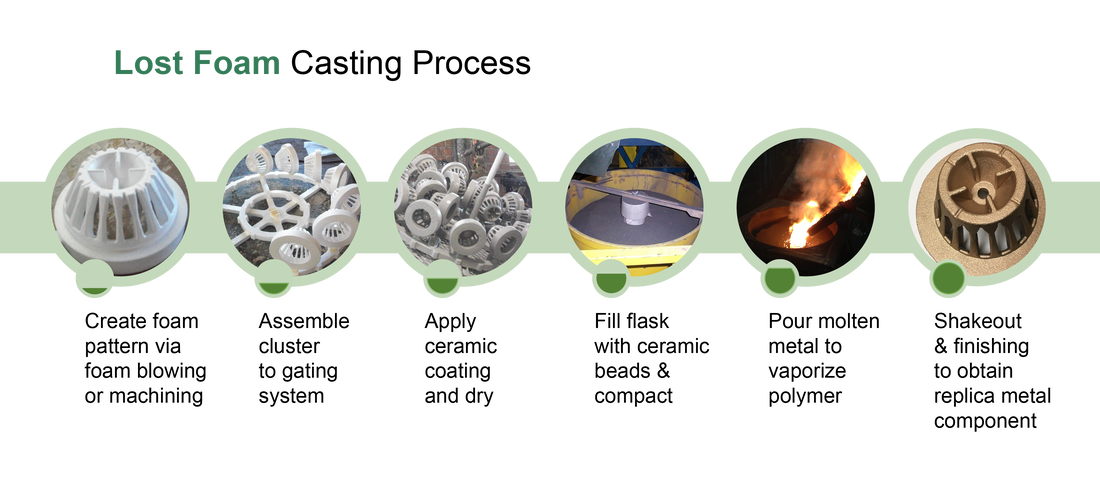
What kind of product suit for lost foam casting?
Lost foam casting is well-suited for a wide range of products and components, particularly those that require intricate shapes, complex geometries, and close tolerances. Some examples of products that are well-suited for lost foam casting include:
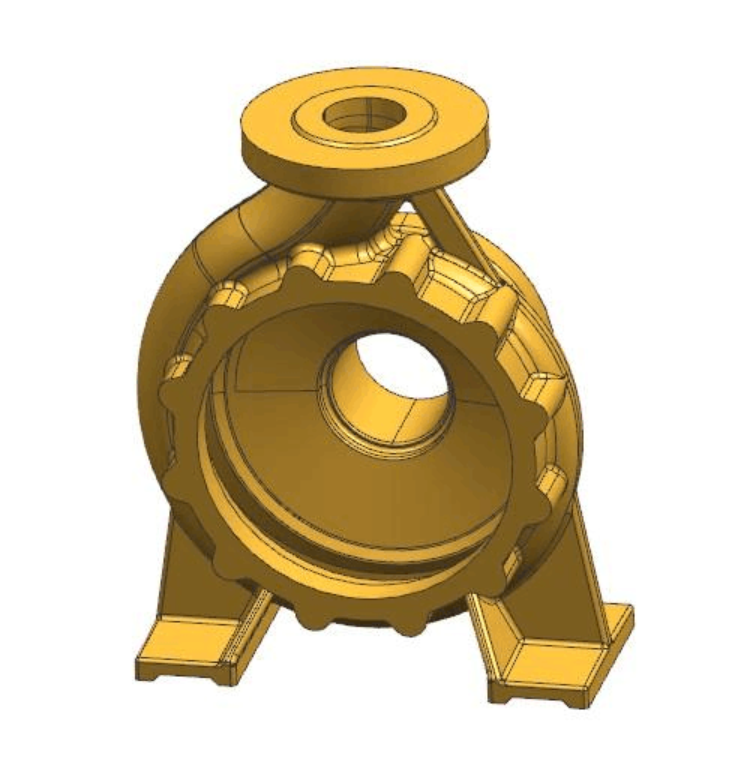
Engine Blocks and Cylinder Heads: The intricate passages, cooling channels, and complex geometries found in engine blocks and cylinder heads make them ideal candidates for lost foam casting. The process allows for the creation of intricate internal features without the need for cores.
Pump Housings and Impellers: Components used in fluid handling systems, such as pump housings and impellers, often have complex geometries and internal passages. Lost foam casting can produce these components with minimal machining and excellent dimensional accuracy.
Automotive Components: Various automotive components, including intake manifolds, transmission cases, and suspension components, can benefit from the design flexibility and reduced machining requirements offered by lost foam casting.
Aerospace Components: Certain aerospace components, such as complex housings, brackets, and structural elements, can be efficiently produced using lost foam casting due to the process’s ability to create intricate shapes and reduce the need for assembly.
Industrial Machinery Parts: Components used in industrial machinery, such as gear housings, valve bodies, and structural elements, can be effectively manufactured using lost foam casting, especially when intricate internal features are required.
Artistic and Sculptural Pieces: Lost foam casting is also used in artistic and sculptural applications to create intricate and detailed metal sculptures and artistic pieces.
Overall, lost foam casting is suitable for a wide range of products and components across industries where complex shapes, intricate details, and reduced machining requirements are desired. The process offers design flexibility and the ability to produce near-net shape castings with minimal tooling and assembly requirements.
What advantage of lost foam casting comparing with other casting way?
Lost foam casting offers several advantages compared to other casting methods, making it a preferred choice for certain applications. Some of the key advantages of lost foam casting include:
Design Flexibility: Lost foam casting allows for the production of complex and intricate shapes with minimal tooling and assembly requirements. This flexibility is particularly beneficial for components with intricate internal features and complex geometries.
Reduced Tooling Costs: The use of foam patterns in lost foam casting eliminates the need for complex and expensive tooling, such as cores and molds, which can result in cost savings, especially for low to medium volume production runs.
Minimal Machining: The process can produce near-net shape castings with tight tolerances, reducing the need for extensive machining operations and minimizing material waste.
Improved Surface Finish: Lost foam castings often exhibit a smooth surface finish, reducing the need for additional finishing operations and enhancing the overall aesthetics of the final product.
Reduced Assembly Requirements: Complex components that would typically require multiple pieces and assembly can be produced as a single, intricate casting using lost foam casting, reducing the need for joining operations.
Material Savings: The process can minimize material waste, as it produces castings close to the final shape, reducing the amount of material that needs to be machined away.
Environmental Benefits: Lost foam casting can be considered environmentally friendly, as it eliminates the need for sand cores and binders, reducing the generation of waste associated with traditional sand casting processes.
Improved Dimensional Accuracy: The process can achieve high dimensional accuracy and repeatability, resulting in consistent and precise castings.
It’s important to note that while lost foam casting offers these advantages, it also requires careful attention to pattern production, coating, and metal pouring to ensure successful castings. Additionally, the suitability of lost foam casting depends on the specific requirements of the component and the overall production process.
- View as
Ductile Iron Lost Foam Casting
The following is the introduction of high quality Ductile Iron Lost Foam Casting, hoping to help you better understand Ductile Iron Lost Foam Casting. Welcome new and old customers to continue to cooperate with us to create a better future!Ductile Iron Lost Foam Casting is a type of casting process used to create precise and complex parts in ductile iron, which is a type of cast iron that contains magnesium and can be cast in flexible shapes. Ductile Iron Lost Foam Casting is very similar to traditional lost foam casting but is specific to ductile iron parts.
Iron Lost Foam Casting
As the professional manufacturer, we would like to provide you Iron Lost Foam Casting. And we will offer you the best after-sale service and timely delivery.Iron Lost Foam Casting is a type of casting process that is similar to Carbon Steel Lost Foam Casting, but is used specifically for iron-based materials. As the name suggests, it is a process that involves creating and molding a foam pattern that is coated in ceramic, and then filled with molten iron to create the final part.
Carbon Steel Lost Foam Casting
You can rest assured to buy Carbon Steel Lost Foam Casting from our factory and we will offer you the best after-sale service and timely delivery.Carbon Steel Lost Foam Casting is a foundry process that is used to produce carbon steel castings with intricate shapes and complex geometries. It is a variation of the Lost Foam Casting process that uses a foam pattern coated with a ceramic material to create a mold that is then filled with molten carbon steel.
Alloy Steel Lost Foam Casting
You can rest assured to buy customized Alloy Steel Lost Foam Casting from us. We look forward to cooperating with you, if you want to know more, you can consult us now, we will reply to you in time!Alloy Steel Lost Foam Casting is a specialized foundry process that is used to produce steel castings using alloys with added elements such as nickel, chromium, or molybdenum. These alloys improve the final component's properties such as strength, wear resistance, and corrosion resistance.
Stainless Steel Lost Foam Casting
You are welcomed to come to our factory to buy the latest selling, low price, and high-quality Stainless Steel Lost Foam Casting. We look forward to cooperating with you.Stainless Steel Lost Foam Casting is a variation of the traditional Lost Foam Casting process that is specifically designed for producing stainless steel castings. It uses a foam pattern that is coated with a ceramic material to create a mold. Molten stainless steel is then poured into the mold, which vaporizes the foam pattern and fills the void left behind in the mold, resulting in a high-quality casted stainless steel part.
Steel Lost Foam Casting
As the professional manufacturer, we would like to provide you high quality Steel Lost Foam Casting. And we will offer you the best after-sale service and timely delivery.Steel Lost Foam Casting is a type of foundry process used to make steel castings with intricate shapes and design features. This process involves the use of a foam pattern, which is coated with a ceramic material to create a mold.
